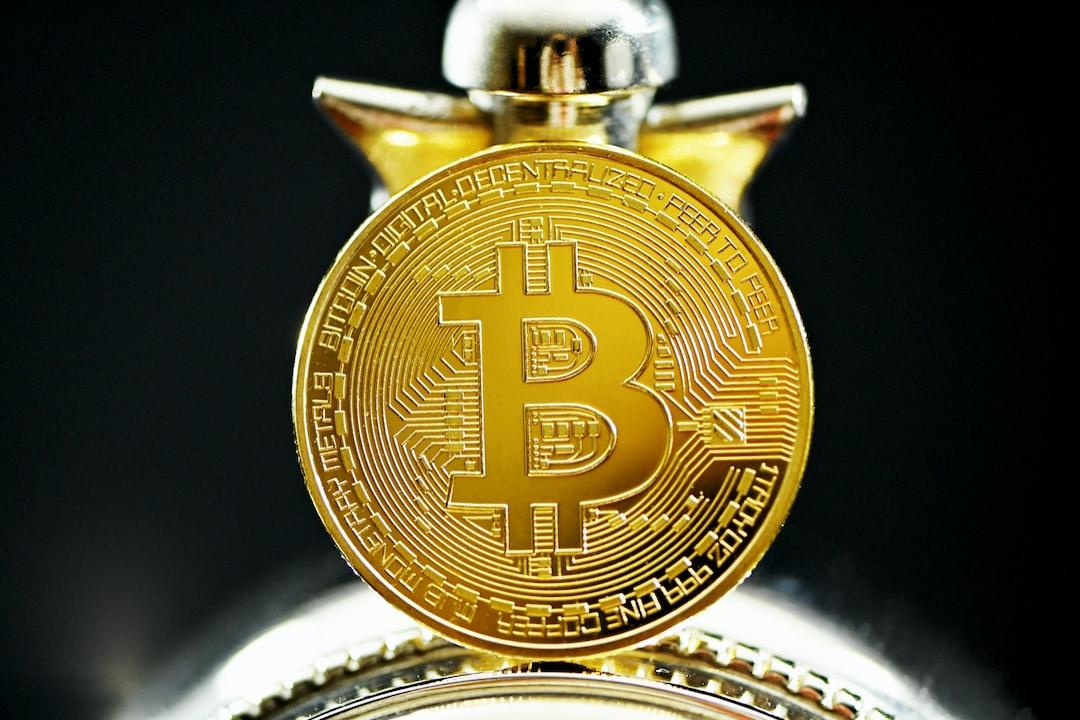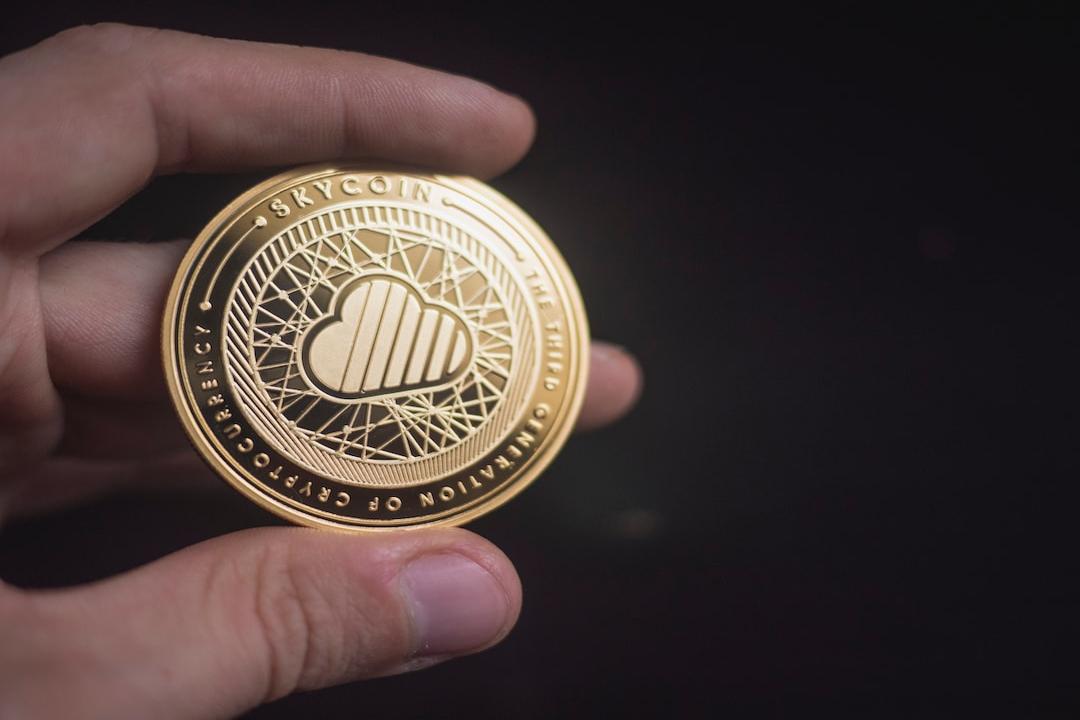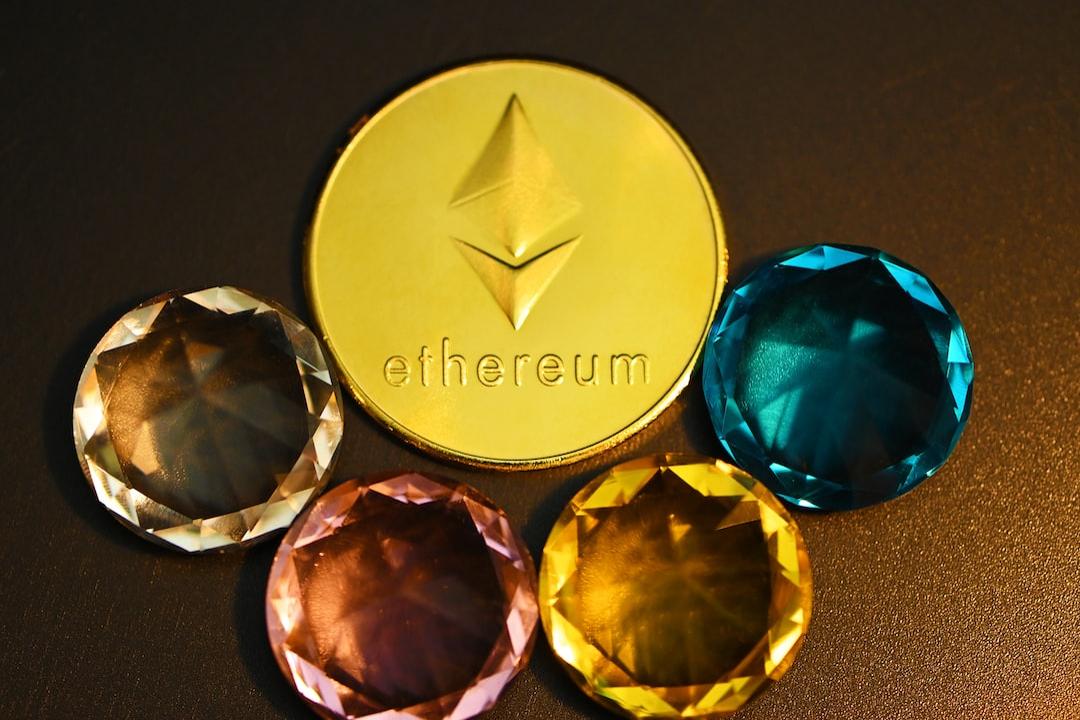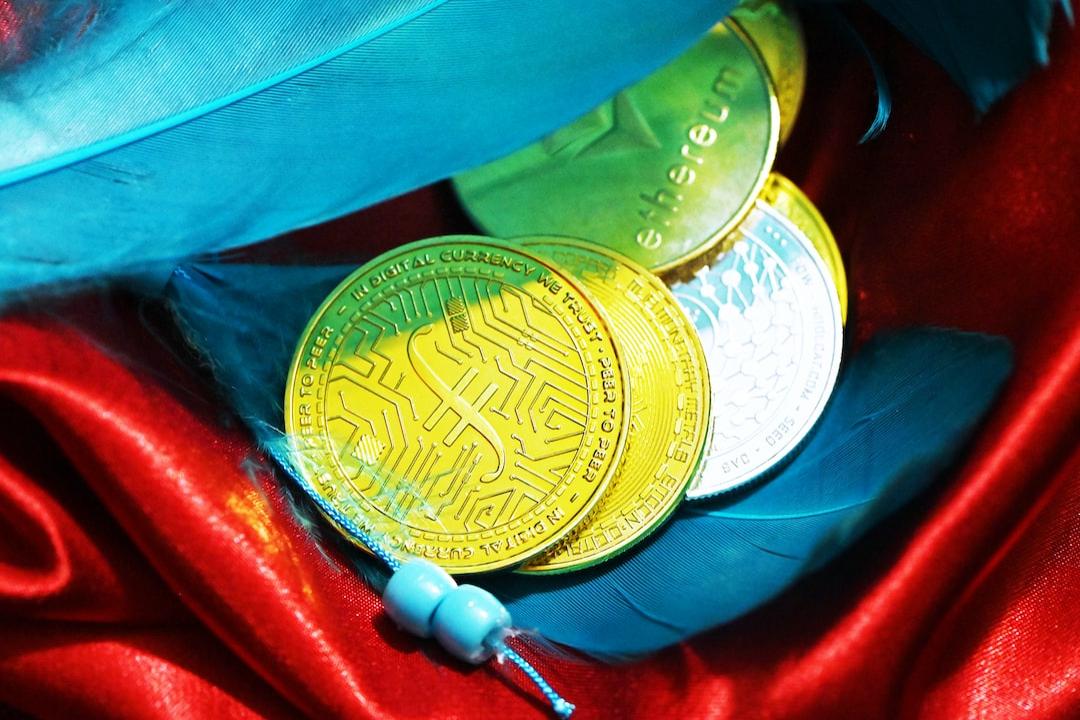With the rapid development of artificial intelligence (AI) technology, it has become increasingly difficult to distinguish between humans and AI in digital environments. This need to verify human identity has prompted Tools for Humanity to develop relevant technology and infrastructure.
World ID is a digital identity infrastructure designed to prove that users are human. It uses zero-knowledge proof technology to confirm identity without revealing personal information.
In addition to basic identity verification, World ID also operates as a digital identity platform. It supports SDK integration and optional identity verification, making it effective in multiple industries.
1. Introduction
Artificial intelligence is rapidly advancing, surpassing Moore’s Law, and its impact is felt in almost every industry.
OpenAI recently raised $6.6 billion in funding, the largest investment ever made in a private company.
This influx of capital demonstrates the rapid growth of the AI market and the global race to develop advanced AI technology.
However, we must also recognize the dual nature of rapid technological development, and AI is no exception. As the boundaries between humans and AI become blurred, new types of crimes are emerging. These changes also affect the business world by distorting the market and disrupting fair trade.
While these issues have existed since the birth of internet technology, they have become more complex and difficult to handle with the advancement of AI.
Distinguishing between advanced robots and real users has become a major challenge. This change threatens the trust and security of digital environments and poses serious challenges to society. Efforts to address these issues are underway, and Tools for Humanity’s “World Network” is a good example.
2. World Network: Human Identity Verification in the AI Era
World Network is a project aimed at identifying and protecting real humans in the digital environment, which has become particularly important with the advancement of artificial intelligence.
The project was co-founded by physicist Alex Blania and AI pioneer Sam Altman. Both founders have extensive experience in AI research and development.
Blania focuses on deep learning and its application in quantum computing, while Altman, as the co-founder and CEO of OpenAI, has been leading the development of AI technology.
They have a balanced attitude towards the progress of AI technology while recognizing the challenges it may bring.
Their goal is to preserve human uniqueness in a future full of advanced AI. To achieve this, they established Tools For Humanity (TFH) and launched the World Network project.
The core concept of World Network is “human identity verification,” and its mission is to identify and protect real humans in complex digital environments while promoting responsible use of technology.
To achieve this goal, World Network uses iris recognition as the most reliable biometric information. Each person’s iris is unique, with a very low rate of misidentification, providing security for identity verification.
Even identical twins have different iris patterns, which remain unchanged over time. World Network has developed a system that utilizes these characteristics to verify human identity through de-identified iris codes.
3. Human Identity Verification Process of World Network
The human identity verification process of World Network is as follows: First, the user needs to install the World App on their smartphone and create a World ID.
Then, at the designated verification location, the user scans the QR code of their World ID using the Orb device, which is responsible for verifying that the individual is a unique human.
Next, the Orb captures the user’s iris and facial images and generates an iris code for integrity verification.
After the verification is completed, the Orb immediately deletes the original iris images. During the authentication process of World ID, the iris code is transmitted to the user’s smartphone through end-to-end encryption using a public key.
Decryption of the iris code can only be done by combining the public key with the private key stored on the phone, ensuring data security and giving users complete control over their information.
The iris code is divided into multiple fragments and stored anonymously using secure multi-party computation (SMPC) technology. These fragments are distributed among trusted organizations in various locations such as the United States and Germany, with each organization only able to access its specific fragment. This structure greatly enhances data anonymity and security.
With the addition of more universities and non-profit organizations, this approach is expected to become even more robust. Once all the steps are completed, users can prove their unique identity online using their verified World ID.
For more detailed information, please visit the “Private by Design” page of World Network.
4. World ID: The New Standard for Digital Identity
Through World Network, proving human identity is no longer just a “certificate.” Based on this, World ID is becoming a flexible digital identity platform. It can be integrated with various services through SDK and additional identity information can be added as needed.
World ID has over 7 million verified users in more than 160 countries worldwide and has been integrated with major service platforms such as Shopify, Telegram, and Reddit.
Users can choose to associate their government-issued identification documents, such as passports or driver’s licenses, with their World ID. This optional feature allows users to verify specific information, such as age or nationality, when needed.
These features enable users to access age-restricted services, products from specific countries, and undergo authentication verification, among others.
In addition to scalability, World ID also uses blockchain and zero-knowledge proof technology to protect user privacy.
This setup allows users to provide only necessary information without disclosing their personal details.
For example, a service requiring age verification can confirm that a user is an adult without obtaining their date of birth. These features make World ID the new standard for digital identity verification in the AI era.
5. Ways to Use World ID
With the widespread adoption of artificial intelligence technology, the risk of manipulation and fraud through robots and fake accounts is increasing, especially in the business environment.
World ID has the potential to effectively address these challenges. With its scalability, World ID can be applied in various environments and solve different problems. Next, we will explore specific application examples of World ID in different industries and services.
5.1. Application of World ID in Social Networking Services
As AI technology advances, social networking services face a crisis as artificially generated content becomes more complex and cost-effective.
Elon Musk reported that on X (formerly known as Twitter), fake and spam accounts make up about 20% of all users. These accounts manipulate public opinion through advertisements and spam information, damaging the platform’s reputation.
With the advancement of AI technology, this risk is expected to increase. World ID aims to address this problem through a biometric-based unique identity verification system.
By limiting each person to only one account, World ID can effectively prevent the creation of fake accounts and reduce platform abuse.
5.2. Application of World ID in Subscription Services
Subscription service platforms often face the problem of multiple account abuse. Companies like YouTube and Netflix have found that more and more users are taking advantage of free trials by creating additional accounts or even reselling access rights.
This situation not only makes it difficult to identify real users but also increases the cost of acquiring users and reduces industry efficiency.
The unique identity verification system of World ID solves these problems by confirming that each user is a real person and preventing duplicate accounts. This solution is expected to significantly improve the cost efficiency of the subscription service industry.
5.3. Application of World ID in the Concert Market
World ID has a significant impact on the concert market. The industry has long faced issues of unfair trading, black market ticket sales, and long queues at venues.
World ID offers the potential to address these challenges and improve the entire process from ticket purchase to entry.
During the ticket purchase stage, World ID can prevent multi-account usage and verify user identity in advance, ensuring fairness in transactions and providing more opportunities for genuine audiences.
At the venue entrance, World ID, together with the new pilot Face Auth feature, can quickly and accurately perform identity verification. This method is more efficient and reliable than traditional manual identity checks, reducing waiting times and inconveniences for the audience.
This improvement is also beneficial for concert organizers. Streamlining the entry process reduces operational costs and improves audience management efficiency.
Therefore, World ID has the potential to revolutionize the concert market and create a better experience for both organizers and attendees.
In conclusion, World ID and the World Network project are pioneering efforts to address the challenges posed by the rapid development of AI technology. By providing a reliable and secure human identity verification system, World ID offers solutions for various industries and services. Its integration with biometric information, such as iris recognition, ensures accuracy and privacy protection. As AI continues to advance, World ID is poised to become the new standard for digital identity verification in the AI era.World ID is expected to improve overall operational efficiency and increase customer satisfaction.
5.4. Application of World ID in E-commerce

Example of fake reviews
Image /
WIRED
World ID has significant potential for application in the e-commerce industry. In recent years, the e-commerce industry has experienced rapid development, but it also faces new challenges with the advancement of artificial intelligence technology.
One of the main issues is the reliability of review systems, as users heavily rely on these reviews for their purchasing decisions.
Artificial intelligence technology has made it easier to generate large-scale fake reviews, which undermines users’ ability to make rational purchasing decisions.
According to a study by the UK government, 11-15% of reviews for common products in the UK e-commerce market may be fake.
Large platforms like Amazon also face this problem, leading to an increase in user complaints.
Most e-commerce platforms usually address the reliability issue of reviews only after problems arise, but World ID offers a proactive solution. By allowing only verified genuine shoppers through World ID to write reviews, it can effectively reduce AI-generated fake reviews.
This approach helps buyers make more informed decisions and improves the overall reliability of the e-commerce ecosystem.
5.5. Application of World ID in Crime Prevention, including Deepfake

Image /
KnowBe4
A notable example is North Korean developers using deepfake technology to forge identities for job acquisition.
With the increase in remote work positions, such incidents are also on the rise. These developers were found using false identities to participate in projects such as Injective, Fantom, and SushiSwap.
They use deepfake technology in the identity verification process, such as impersonating legitimate applicants in video interviews. Once successfully hired, they attempt to infiltrate internal systems and steal funds.
In February of this year, a multinational company, Arup, highlighted the severity of this issue with a security vulnerability.
Criminals impersonated the company’s CFO, using false voice and imagery in video conferences to deceive employees and obtain sensitive information through phishing emails.
This incident demonstrates that AI-driven crimes are no longer just theoretical threats but are causing tangible damage.
These cases show that traditional identity verification methods are no longer sufficient to provide security.
To address this, World Network has introduced World ID Deep Face. This feature confirms the presence of real humans in video conferences and streaming media to counter the risk of deepfake technology.

Working principle of World ID Deep Face
Image /
World Network
World ID Deep Face can be accessed through the World application and desktop, and it can also be extended as an SDK. This technology seamlessly integrates with platforms such as Google Meet, Zoom, Twitch, and YouTube, enhancing security and preventing identity fraud.
Additionally, it can be applied to recruitment platforms and other services that require identity verification. World ID Deep Face is expected to be an important tool in combating AI-driven identity fraud.
6. Challenges Faced by World ID and Their Solutions
World ID has the potential to become a core identity verification tool in the AI era, with its excellent security and usability. However, there are still challenges that need to be overcome.
The main issues include: 1) public resistance to the use of biometric information, 2) the risk of misuse of World ID, and 3) the physical accessibility of Orb devices.
6.1. Public Resistance to the Use of Biometric Information
Despite the high authenticity of World Network’s human verification methods, there is still public resistance when it comes to using biometric information. The main concern of the public is privacy infringement. To gain trust, World Network must take strong security measures.
World Network addresses this issue by adopting Anonymous Multi-Party Computation (AMPC) technology. This method divides iris codes into multiple parts, stores them in a distributed and de-identified manner, and manages them as numerical data rather than images.
Furthermore, after verification, only World ID is used for identity verification without involving the iris codes themselves. These security measures aim to alleviate public concerns about the use of biometric data.

Image /
Apple Optic ID (left), Samsung Face Recognition (right)
The application of biometric technology in various industries has played a significant role in increasing social acceptance.
As biometric technologies like Apple’s Optic ID and Samsung’s face recognition gradually integrate into daily life, people may become more accustomed and accepting. This gradual exposure helps raise public awareness, thereby accelerating the adoption of World ID.
6.2. Potential Misuse of World ID
Another challenge faced by World ID is the risk of abuse through account sales.
In traditional industries, account sales activities conducted through ID transactions are common, and the sensitive biometric data used by World ID, such as iris scans, may also face similar transaction risks. Such account transactions can affect the reliability of the system.
To address this, World Network has implemented various security measures. For example, World ID authentication uses facial image data stored on users’ smartphones.
Additionally, if users unknowingly sell their accounts, they can still recover them through the World ID reset function. These protective measures aim to prevent account sales, loss, or theft, providing security to users while enhancing system flexibility and minimizing abuse.

Image /
Vitalik Buterin
By expanding the World ID ecosystem, the occurrence of abuse can naturally decrease. Sold accounts typically lack the natural activities of genuine users and exhibit different behavioral patterns.
By first conducting hardware-based biometric authentication, followed by gradually incorporating social graph authentication, user authenticity can be better verified.
With increased user activity, monitoring and identifying behavioral patterns of sold accounts become easier. Vitalik Buterin also suggests that combining biometric and social graph authentication can help establish long-term trust.
6.3. Accessibility Issue of Orb
While the iris authentication of World ID provides high security, the requirement of face-to-face verification through the Orb device poses a significant barrier.
This is not only a distance issue but also involves the challenge of mass-producing and distributing high-cost Orb devices on a global scale.

Orb 2.0 features
Image /
World Network
To address this issue, World Network is opening up the design of Orb to support global production.
Additionally, they are collaborating with Chain Partners in South Korea to jointly develop hardware through the Orb 2.0 project. The newly released Orb 2.0 has faster production speed, accelerates the verification process, and reduces the use of 30% of parts, greatly improving production efficiency.

On-demand provision of Orb
Image /
World Network
We plan to place Orb devices in everyday places such as coffee shops to enhance user accessibility.
In South America, we will launch an “on-demand Orb” service in collaboration with Rappi, allowing users to perform World ID verification from their homes.
Although this expanded accessibility brings new challenges such as ATM-like management and security issues, the efforts of World Network are an important step towards building a global human identity verification infrastructure.
7. Conclusion
With the rapid advancement of AI technology, distinguishing between humans and AI is becoming increasingly difficult. Therefore, there is a growing need to prove human identities more than ever before.
However, this is not a simple task. The challenge lies in verifying the identities of approximately 8.1 billion people worldwide, which is complex and massive.

Image /
Times of India
In many cases, biometric technology is considered the most effective choice.
The Aadhaar system in India is a typical example. The Indian government successfully registered approximately 95% of the adult population through the use of iris and fingerprint recognition.
This system greatly simplifies access to services such as financial activities. The successful implementation of such a large-scale biometric system in a country with a population of over 1.4 billion demonstrates the enormous potential of biometric-based identity verification and the feasibility of global systems like World Network.
World Network is constructed based on this approach. It combines zero-knowledge proofs and blockchain technology to enhance security and privacy protection.
Currently, multiple real-world applications are in progress. For example, the Malaysian government’s digital certificate project adopts World Network’s iris scanning technology. Additionally, WorldChain aims to enhance the scalability of global applications by creating a permissionless system.
These technological advancements indicate that World Network has the potential to evolve from a simple human identity verification into a global identity infrastructure.
However, challenges still exist. Low social acceptance, misuse risks, and regulatory issues are the main obstacles. How World Network addresses these challenges will be crucial for its comprehensive development.

